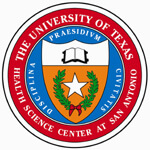 The Health Science Center received more than $88 million in National Institutes of Health (NIH) awards in fiscal year 2004, an increase of 7.5 percent over the previous year and 84 percent higher than FY 1999.
The Health Science Center received more than $88 million in National Institutes of Health (NIH) awards in fiscal year 2004, an increase of 7.5 percent over the previous year and 84 percent higher than FY 1999.
The Health Science Center fared well in the medical school rankings. Although the basic science departments are separate from the Medical School departments at the Health Science Center, the NIH combines their awards for reporting purposes.
The NIH’s restricted budget last year affected thousands of institutions. The Health Science Center’s Medical School/Graduate School of Biomedical Sciences was the only University of Texas institution that received more funding in 2004 than in 2003. It moved from 50 to 48 in national rank.
Among the other medical school rankings, the U.T. Southwestern Medical Center at Dallas held its spot at 21, the U.T. Medical Branch moved from 19 to 39, and the U.T. Health Science Center at Houston moved from 58 to 64.
“Our advancement indicates that our institution has organized itself to become more competitive for extramural funding in today’s scientific climate,” said Brian Herman, Ph.D., vice president for research. “We are doing well in a period of more intense competition and limited NIH funds.”
The NIH computes data annually on funding provided by its grants, cooperative agreements and contracts to universities, hospitals and other institutions. In 1998, the NIH began a process of doubling its budget over a five-year period and reached the goal in 2003.
The Health Science Center’s aging programs received 1.58 percent of the National Institute on Aging’s (NIA) total budget in FY 2004. The Barshop Institute has the largest number NIA of grants (36) and the highest total of NIA funding ($13.3 million) of any Texas institution, and is first in number of NIA grants and second in NIA funding among U.S. medical centers.
Oscar Benavente, M.D., associate professor of medicine in the division of neurology, and Robert Hart, M.D., professor of medicine in the division of neurology, hold the largest single research grant in the Health Science Center’s history. The National Institute of Neurological Disorders and Stroke awarded $37 million for their study called “Secondary Prevention of Small Subcortical Strokes,” a study to prevent strokes in patients who have already had subcortical strokes.
To learn more or to see a list of the NIH rankings, click on: grants.nih.gov/grants/award/awardtr.htm.

